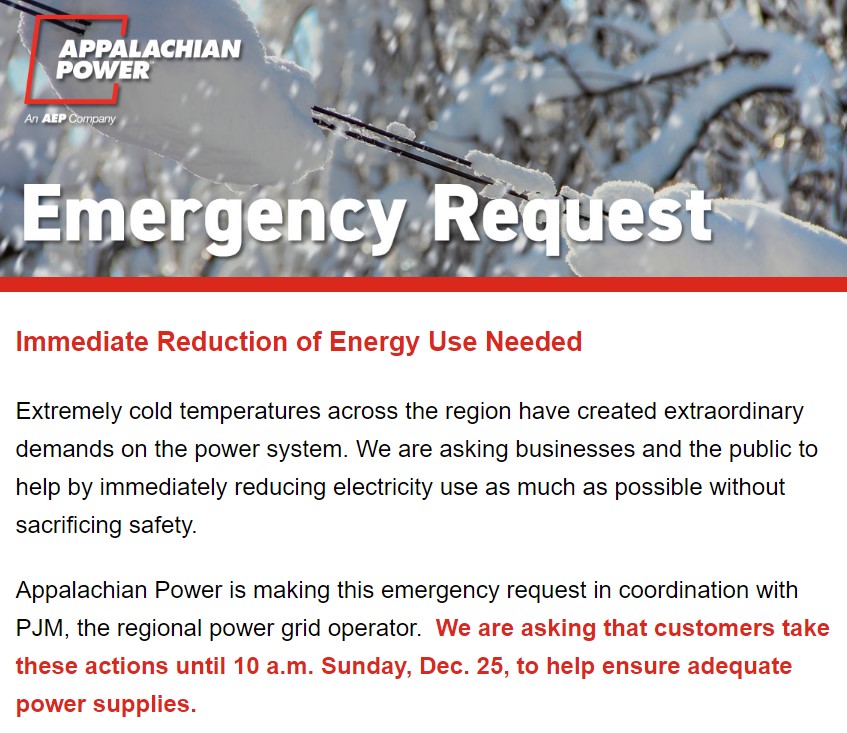GridWatch 2022: Christmas rolling blackouts edition
Many residents of the eastern United States received an unwelcome Christmas gift this year: rolling blackouts during cold weather.
I received this email on Christmas Eve from Appalachian Power Company, which serves about one million customers in western Virginia, West Virginia, and eastern Tennessee.

What followed in the email was a list of energy reduction suggestions: reduce the thermostat, etc. Despite the email photo, there was not a winter storm at the time, just cold weather.
The email references PJM, the Pennsylvania, New Jersey, and Maryland power grid, which actually serves a swatch of America stretching from northern Illinois to eastern North Carolina.
Customers in the region appear to have dodged rolling blackouts, but customers further south were not so lucky. Around 550,000 customers were subject to blackouts in North Carolina on Christmas Eve, although that figure had dropped to around 2,000 on Christmas Day. From a local news report,
The company said the rolling blackouts were “temporary outages that were taken to protect Duke Energy customers from more extended outages during extreme temps across much of the eastern U.S.”
But, many customers were upset when outages lasted for hours.
The situation was much the same in neighboring Tennessee, which is served by the Federal-government-owned Tennessee Valley Authority (TVA). The Tennessean reported,
The Tennessee Valley Authority called for temporary energy load reductions, or rolling blackouts as some call them, to stabilize the regional power grid for the first time in its 89-year history amid subzero temperatures Friday morning.
The temperature, in fact, never got below zero in Nashville last week, at any point. The all-time record cold for the city that still stands at minus 17 on January 21, 1985, was never in any danger.
There were plenty of warnings. The fact is that the push for more renewables (wind, solar) and shutting down conventional power sources (coal, natural gas, and nuclear) has left the grid more vulnerable — even in the heart of coal country.